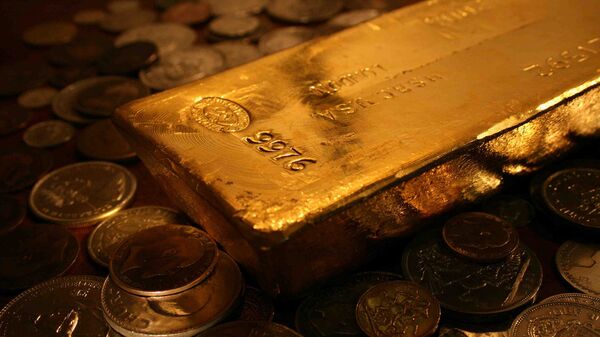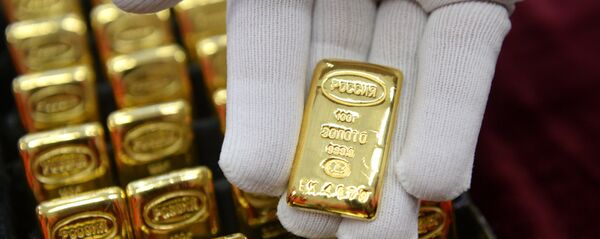However, market risks are not the main factor determining the value of gold and precious metals, and other types of safe-haven assets.
At this point, the demonetized gold, being just a yet another article of international trade in goods, is bought and sold for the US dollars, meaning the Federal Reserve's policies, having direct implications for all types of global markets, also affect the value of gold — in a negative way.
Near-zero inflation, persistent in most advanced economies, coupled with relatively solid economic growth and gains in labour markets, have all contributed to the creation of an unfavourable environment for safe-haven assets. Moments of panic in financial markets thus only trigger brief surges in gold prices, generating only a reasonably good selling opportunity. Consequently, gold prices are retreating from their yearly peaks at a dramatically fast pace: markets' bets on gold are utterly bearish.
Gold for immediate delivery slipped 1.5 to $1,191.02/oz in Singapore compared to its 52-week highest of $1,263.48/oz hit on 11 February, at the height of international stock market anxiety. Yet, gold is still 13% above its value at the year's start, as effects of January's stock carnage on Wall Street and anxiety over Asia have not yet completely worn out. It is still the right selling opportunity, though: the dollar's further appreciation has left gold no chance but falling below $1,000/oz by the year's end, according to Goldman Sachs' calculations.
The effects of the US Fed hikes in base interest rates to the dollar's FX rate are quite obvious, with the greenback posting gains steadily ever since the Fed chair Janet Yellen ended the 30-year era of cheap dollar liquidity in 2013.
"We believe that these new fears, like past fears, are not justified," Goldman Sachs' analysts noted, referring to the financial markets' scare of the recent months. "Systemic risks stemming from the collapse in oil and commodity prices are extremely small."
Amidst the lingering threat or reality disinflation from the US to Japan, and the unprecedented rise in value of paper money stateside, with the dollar hitting its new multi-year highs against the basket of its international peers, the demand for gold is evaporating.
Meanwhile, as stocks and high-yield bonds have higher returns per investment, are more liquid, or easier to buy and sell (that is, do not include delivery process to say the least), the appeal of financial market instruments is also greater than that of gold due to their mismatching long-term cycles. Global shares have been thus far rising for seven years straight after the 2009 meltdown, while gold has been sliding since 2011 after posting ten years of solid gains. That said, the fundamental trend is hardly to reverse within at least next three years, meaning further gains in stocks and losses in safe-haven assets including gold.



